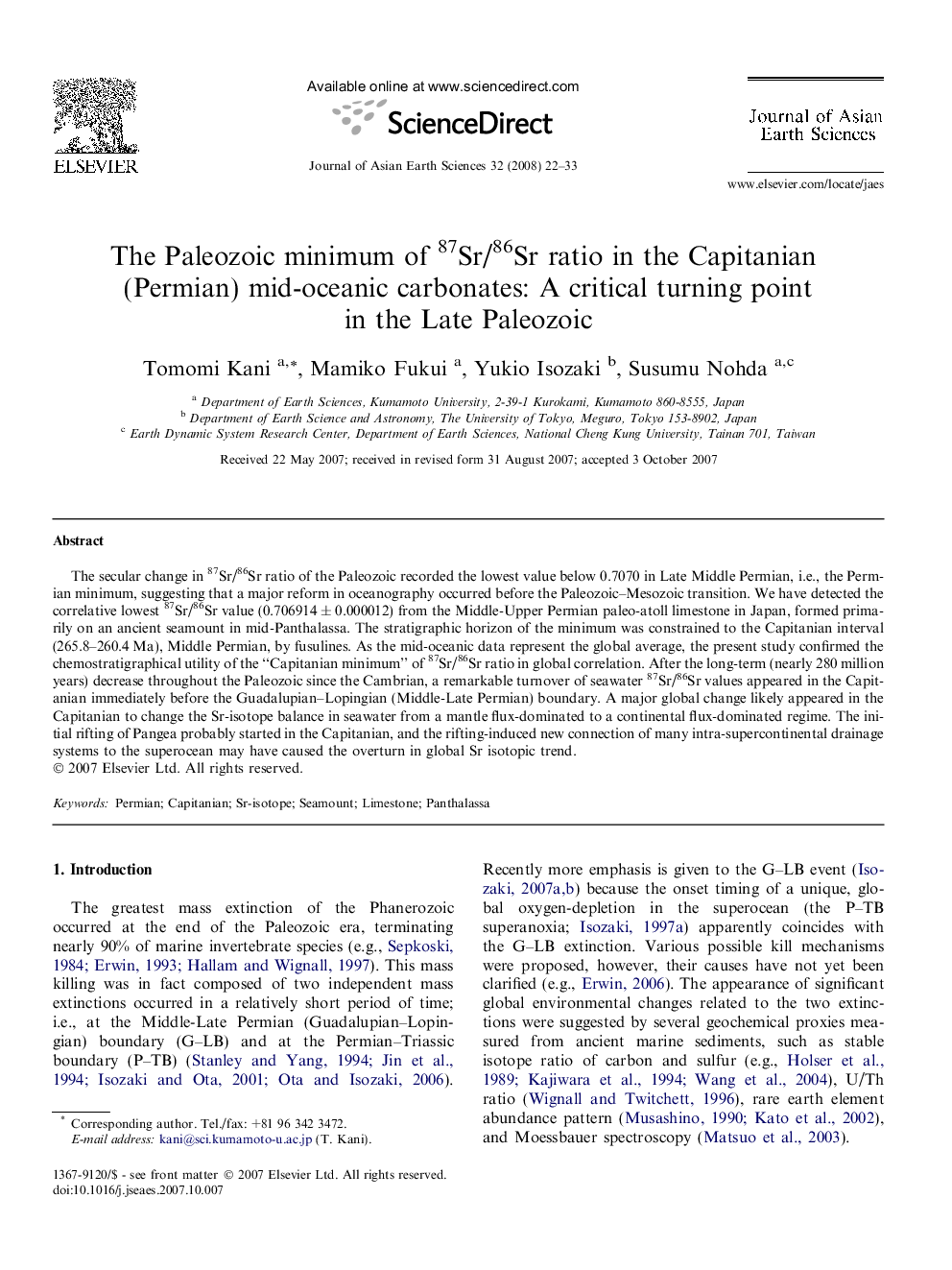| Article ID | Journal | Published Year | Pages | File Type |
|---|---|---|---|---|
| 4732417 | Journal of Asian Earth Sciences | 2008 | 12 Pages |
The secular change in 87Sr/86Sr ratio of the Paleozoic recorded the lowest value below 0.7070 in Late Middle Permian, i.e., the Permian minimum, suggesting that a major reform in oceanography occurred before the Paleozoic–Mesozoic transition. We have detected the correlative lowest 87Sr/86Sr value (0.706914 ± 0.000012) from the Middle-Upper Permian paleo-atoll limestone in Japan, formed primarily on an ancient seamount in mid-Panthalassa. The stratigraphic horizon of the minimum was constrained to the Capitanian interval (265.8–260.4 Ma), Middle Permian, by fusulines. As the mid-oceanic data represent the global average, the present study confirmed the chemostratigraphical utility of the “Capitanian minimum” of 87Sr/86Sr ratio in global correlation. After the long-term (nearly 280 million years) decrease throughout the Paleozoic since the Cambrian, a remarkable turnover of seawater 87Sr/86Sr values appeared in the Capitanian immediately before the Guadalupian–Lopingian (Middle-Late Permian) boundary. A major global change likely appeared in the Capitanian to change the Sr-isotope balance in seawater from a mantle flux-dominated to a continental flux-dominated regime. The initial rifting of Pangea probably started in the Capitanian, and the rifting-induced new connection of many intra-supercontinental drainage systems to the superocean may have caused the overturn in global Sr isotopic trend.
